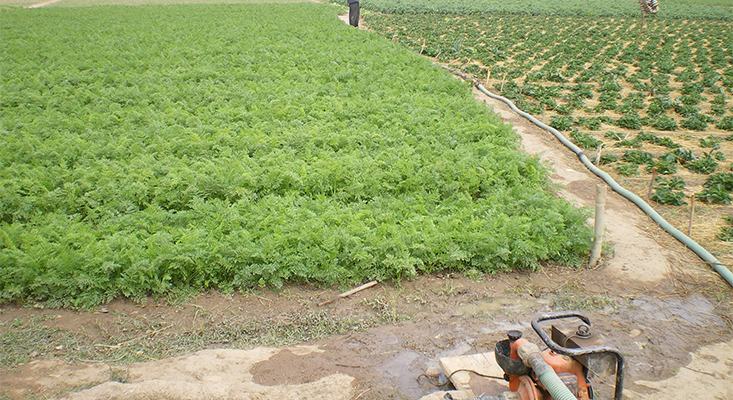You may think the key to beating antibiotic resistance is for doctors to prescribe less and scientists to find new drug candidates. But the fundamental solutions may lie far from medicine. They may lie in managing our rivers and soils. Scientists who have uncovered antibiotics and antibiotic-resistant bacteria in rivers and wastewater are now developing techniques to quantify the dangers.
One way in which antibiotic residues reach the environment is when people excrete them in their feces and urine, says Willem van Schaik, a specialist in microbiology and infection at the University of Birmingham in the United Kingdom. And it’s not just the drugs that end up in the environment. The disease-causing germs hitch a ride on the antibiotics, and a portion of them are resistant to the drugs.
In poorer countries, more than 80 percent of sewage is discharged untreated into the environment. In Cameroon’s capital, Yaounde, Blaise Bougnom, an environmental microbiologist at the University of Yaounde, has been piecing together one particular route for the sewage: human waste often goes directly into city canals, from where urban farmers take water to irrigate crops crucial for city dwellers’ vegetable supplies. Urban farming is widespread in poorer countries, with vegetables growing on roadsides, along drainage canals, in roundabouts and parks. It can provide 40 percent of a city’s food supply and up to 90 percent of its demand for vegetables.

Bougnom says there’s an “alarming” level of antibiotic-resistant infections in Yaounde’s hospitals. After speaking with doctors, Bougnom says, “I started thinking there might be a relationship between what we are seeing in the clinical setting and what is happening in the environment.”
Bougnom began researching the potential of wastewater to transmit antimicrobial resistance while at the University of Birmingham studying canal wastewater used for irrigation in the cities of Ouagadougou, Burkina Faso, and Yaounde and Ngaoundere in Cameroon. He analyzed which genes were present in the water and found many related to bacteria that cause diarrhea in humans. He also found genes related to antibiotic resistance, including more than 80 known to be easily transferred among bacteria, along with entities, such as plasmids, that transport them. He then compared urban fields in these cities, finding that those that had been irrigated with raw wastewater held more antibiotics and resistance genes than those that had not. “It’s tragic because something that was supposed to bring many solutions,” Bougnom says, referring to urban farms, “might also bring many problems.”
More than 80 percent of sewage is discharged untreated into the environment.
Another potent source of resistance-laden wastewater may be hospital sewage. Across the world, antibiotic use is likely to be higher in hospitals. Half of patients in U.S. hospitals and a third in European hospitals take antibiotics. You can think of the hospital sewage system “as a pipe where an entire bacterial ecosystem is growing on the walls,” says van Schaik. “These ecosystems will be optimized to grow in the conditions of the sewage that’s flowing through those systems. Because levels of antibiotics will be high—almost higher than anywhere else—those bacteria will have adapted to life in the presence of high levels of antibiotics.”
Lisandra Zepeda Mendoza, a genomics expert at the University of Birmingham, a colleague of van Schaik’s, is studying the genetic material of the microbes in that ecosystem in a project called ARCS. She has been analyzing the DNA from the assorted bacteria and viruses found in jars of hospital wastewater, looking for genes associated with the transfer of resistance between bacteria and phages—viruses that can transfer genetic material between bacteria. She is feeding these results—as well as data from other analyses of hospital wastewater—into a machine-learning model that can deduce how potent the resistance threat is in any particular source. If her approach is successful, it could be used to compare the relative dangers of different sources, including rivers near drug factories or hospitals, city canals, and irrigation water. “With this approach, we will be able to make a risk assessment of different environments—and not just wastewater but the bacteria that colonize the human gut or the animal gut or the soil, or anything you can think of,” van Schaik says.
Widening the search for what’s causing antibiotic resistance couldn’t be more important, van Schaik says. “If you go to lower- and middle-income countries, antibiotic resistance is a massive clinical issue and costly. If we can convince some people that it is a good investment to address the underlying cause of antibiotic resistance, rather than trying to improve treatments for patients in hospitals, that would be a very good policy outcome.”
Aisling Irwin is a journalist specializing in science, environment, and the developing world.
Originally published on Horizon: the EU Research & Innovation magazine.
Lead image: Felipe Caparros / Shutterstock






























